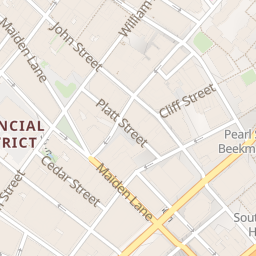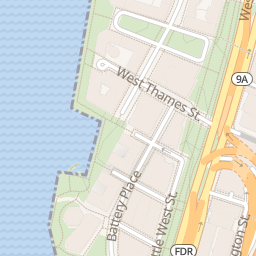Stefan Harrer Phones & Addresses
-
New York, NY
-
Yorktown Heights, NY
-
Rensselaer, NY
-
Cambridge, MA
-
Yorktown Hts, NY
-
660 Fort Washington Ave, New York, NY 10040
Publications
Us Patents
Forming An Electrode Having Reduced Corrosion And Water Decomposition On Surface Using An Organic Protective Layer
View pageUS Patent:
8354336, Jan 15, 2013
Filed:
Jun 22, 2010
Appl. No.:
12/820543
Inventors:
Shafaat Ahmed - Yorktown Heights NY, US
Hariklia Deligianni - Tenafly NJ, US
Dario L. Goldfarb - Dobbs Ferry NY, US
Stefan Harrer - New York NY, US
Binquan Luan - Ossining NY, US
Glenn J. Martyna - Croton-on-Hudson NY, US
Hongbo Peng - Chappaqua NY, US
Stanislav Polonsky - Putnam Valley NY, US
Stephen Rossnagel - Pleasantville NY, US
Xiaoyan Shao - Yorktown Heights NY, US
Gustavo A. Stolovitzky - Riverdale NY, US
Hariklia Deligianni - Tenafly NJ, US
Dario L. Goldfarb - Dobbs Ferry NY, US
Stefan Harrer - New York NY, US
Binquan Luan - Ossining NY, US
Glenn J. Martyna - Croton-on-Hudson NY, US
Hongbo Peng - Chappaqua NY, US
Stanislav Polonsky - Putnam Valley NY, US
Stephen Rossnagel - Pleasantville NY, US
Xiaoyan Shao - Yorktown Heights NY, US
Gustavo A. Stolovitzky - Riverdale NY, US
Assignee:
International Business Machines Corporation - Armonk NY
International Classification:
H01L 21/28
H01L 21/3205
H01L 21/3205
US Classification:
438606, 4352872, 4352871, 20440301, 20440306, 20440308, 20440307, 427258, 205778, 2057775
Abstract:
Accordingly, the present invention provides a method of forming an electrode having reduced corrosion and water decomposition on a surface thereof. A substrate which has a conductive layer disposed thereon is provided and the conductive layer has an oxide layer with an exposed surface. The exposed surface of the oxide layer contacts a solution of an organic surface active compound in an organic solvent to form a protective layer of the organic surface active compound over the oxide layer. The protective layer has a thickness of from about 0. 5 nm to about 5 nm and ranges therebetween depending on a chemical structure of the surface active compound.
Method Of Fabricating Dual Damascene Structures Using A Multilevel Multiple Exposure Patterning Scheme
View pageUS Patent:
8536031, Sep 17, 2013
Filed:
Feb 19, 2010
Appl. No.:
12/708877
Inventors:
John C. Arnold - North Chatham NY, US
Kuang-Jung Chen - Poughkeepsie NY, US
Matthew E. Colburn - Schenectady NY, US
Dario L. Goldfarb - Dobbs Ferry NY, US
Stefan Harrer - New York NY, US
Steven J. Holmes - Guilderland NY, US
Pushkara Varanasi - Poughkeepsie NY, US
Kuang-Jung Chen - Poughkeepsie NY, US
Matthew E. Colburn - Schenectady NY, US
Dario L. Goldfarb - Dobbs Ferry NY, US
Stefan Harrer - New York NY, US
Steven J. Holmes - Guilderland NY, US
Pushkara Varanasi - Poughkeepsie NY, US
Assignee:
International Business Machines Corporation - Armonk NY
International Classification:
H01L 21/26
H01L 21/42
H01L 21/42
US Classification:
438513, 438514, 438700, 438712, 257E21006, 257E21007, 257E21027, 257E21029, 257E21043, 257E21058, 257E21077, 257E2117, 257E21218, 257E21248, 257E21267, 257E21278
Abstract:
A method for fabricating a dual damascene structure includes providing a first photoresist layer coated on an underlying dielectric stack, exposing said first photoresist layer to a first predetermined pattern of light, coating a second photoresist layer onto the pre-exposed first photoresist layer, exposing said second photoresist layer to a second predetermined pattern of light, optionally post-exposure baking the multi-tiered photoresist layers and developing said photoresist layers to form a multi-tiered dual damascene structure in the photoresist layers.
Semiconductor Devices Having Nanochannels Confined By Nanometer-Spaced Electrodes
View pageUS Patent:
8558326, Oct 15, 2013
Filed:
Mar 27, 2012
Appl. No.:
13/430906
Inventors:
Stefan Harrer - New York NY, US
Stanislav Polonsky - Putnam Valley NY, US
Mark B. Ketchen - Hadley MA, US
John A. Ott - Greenwood Lake NY, US
Stanislav Polonsky - Putnam Valley NY, US
Mark B. Ketchen - Hadley MA, US
John A. Ott - Greenwood Lake NY, US
Assignee:
International Business Machines Corporation - Armonk NY
International Classification:
H01L 27/14
US Classification:
257414, 438 48, 324 715, 435 61
Abstract:
Semiconductor devices having integrated nanochannels confined by nanometer spaced electrodes, and VLSI (very large scale integration) planar fabrication methods for making the devices. A semiconductor device includes a bulk substrate and a first metal layer formed on the bulk substrate, wherein the first metal layer comprises a first electrode. A nanochannel is formed over the first metal layer, and extends in a longitudinal direction in parallel with a plane of the bulk substrate. A second metal layer is formed over the nanochannel, wherein the second metal layer comprises a second electrode. A top wall of the nanochannel is defined at least in part by a surface of the second electrode and a bottom wall of the nanochannel is defined by a surface of the first electrode.
Forming An Electrode Having Reduced Corrosion And Water Decomposition On Surface Using A Custom Oxide Layer
View pageUS Patent:
8598018, Dec 3, 2013
Filed:
Jun 22, 2010
Appl. No.:
12/820487
Inventors:
Shafaat Ahmed - Yorktown Heights NY, US
Hariklia Deligianni - Tenafly NJ, US
Dario L. Goldfarb - Dobbs Ferry NY, US
Stefan Harrer - New York NY, US
Hongbo Peng - Yorktown Heights NY, US
Stanislav Polonsky - Putnam Valley NY, US
Stephen Rossnagel - Pleasantville NY, US
Xiaoyan Shao - Yorktown Heights NY, US
Gustavo A. Stolovitzky - Riverdale NY, US
Hariklia Deligianni - Tenafly NJ, US
Dario L. Goldfarb - Dobbs Ferry NY, US
Stefan Harrer - New York NY, US
Hongbo Peng - Yorktown Heights NY, US
Stanislav Polonsky - Putnam Valley NY, US
Stephen Rossnagel - Pleasantville NY, US
Xiaoyan Shao - Yorktown Heights NY, US
Gustavo A. Stolovitzky - Riverdale NY, US
Assignee:
International Business Machines Corporation - Armonk NY
International Classification:
H01L 21/20
H01L 21/36
H01L 21/283
H01L 21/36
H01L 21/283
US Classification:
438483, 438104, 438478, 438758, 438768, 438770, 257E2109, 257E21159, 257E21461
Abstract:
The present invention provides a method of forming an electrode having reduced corrosion and water decomposition on a surface thereof. A conductive layer is deposited on a substrate. The conductive layer is partially oxidized by an oxygen plasma process to convert a portion thereof to an oxide layer thereby forming the electrode. The oxide layer is free of surface defects and the thickness of the oxide layer is from about 0. 09 nm to about 10 nm and ranges therebetween, controllable with 0. 2 nm precision.
Methods Of Directed Self-Assembly, And Layered Structures Formed Therefrom
View pageUS Patent:
8623458, Jan 7, 2014
Filed:
Dec 18, 2009
Appl. No.:
12/642018
Inventors:
Joy Cheng - San Jose CA, US
Matthew E. Colburn - Schenectady NY, US
Stefan Harrer - New York City NY, US
William D. Hinsberg - Fremont CA, US
Steven J. Holmes - Guilderland NY, US
Daniel Paul Sanders - San Jose CA, US
Matthew E. Colburn - Schenectady NY, US
Stefan Harrer - New York City NY, US
William D. Hinsberg - Fremont CA, US
Steven J. Holmes - Guilderland NY, US
Daniel Paul Sanders - San Jose CA, US
Assignee:
International Business Machines Corporation - Armonk NY
International Classification:
B81C 1/00
C08J 5/18
C08J 5/00
C08J 5/18
C08J 5/00
US Classification:
427259, 427256, 427258, 427261, 427264, 427265, 427270, 427271, 427272, 427282, 427 58, 427 961, 427 971, 427 984, 430311, 430312, 430313, 430322, 430325
Abstract:
A layered structure comprising a self-assembled material is formed by a method that includes forming a photochemically, thermally and/or chemically treated patterned photoresist layer disposed on a first surface of a substrate. The treated patterned photoresist layer comprises a non-crosslinked treated photoresist. An orientation control material is cast on the treated patterned photoresist layer, forming a layer containing orientation control material bound to a second surface of the substrate. The treated photoresist and, optionally, any non-bound orientation control material are removed by a development process, resulting in a pre-pattern for self-assembly. A material capable of self-assembly is cast on the pre-pattern. The casted material is allowed to self-assemble with optional heating and/or annealing to produce the layered structure.
Charged Entities As Locomotive To Control Motion Of Polymers Through A Nanochannel
View pageUS Patent:
8641879, Feb 4, 2014
Filed:
Sep 12, 2012
Appl. No.:
13/611662
Inventors:
Stefan Harrer - New York NY, US
Binquan Luan - Ossining NY, US
Glenn J. Martyna - Croton on Hudson NY, US
Hongbo Peng - Chappaque NY, US
Stanislav Polonsky - Putnam Valley NY, US
Stephen M. Rossnagel - Pleasantville NY, US
Ajay K. Royyuru - Congers NY, US
Gustavo A. Stolovitzky - Riverdale NY, US
George F. Walker - New York NY, US
Binquan Luan - Ossining NY, US
Glenn J. Martyna - Croton on Hudson NY, US
Hongbo Peng - Chappaque NY, US
Stanislav Polonsky - Putnam Valley NY, US
Stephen M. Rossnagel - Pleasantville NY, US
Ajay K. Royyuru - Congers NY, US
Gustavo A. Stolovitzky - Riverdale NY, US
George F. Walker - New York NY, US
Assignee:
International Business Machines Corporation - Armonk NY
International Classification:
G01N 27/26
US Classification:
204451
Abstract:
A technique for controlling the motion of one or more charged entities linked to a polymer through a nanochannel is provided. A first reservoir and a second reservoir are connected by the nanochannel. An array of electrodes is positioned along the nanochannel, where fluid fills the first reservoir, the second reservoir, and the nanochannel. A first electrode is in the first reservoir and a second electrode is in the second reservoir. The first and second electrodes are configured to direct the one or more charged entities linked to the polymer into the nanochannel. An array of electrodes is configured to trap the one or more charged entities in the nanochannel responsive to being controlled for trapping. The array of electrodes is configured to move the one or more charged entities along the nanochannel responsive to being controlled for moving.
Nano-Fluidic Field Effective Device To Control Dna Transport Through The Same
View pageUS Patent:
20110308949, Dec 22, 2011
Filed:
Jun 22, 2010
Appl. No.:
12/820516
Inventors:
Stefan Harrer - New York NY, US
Binquan Luan - Ossining NY, US
Glenn J. Martyna - Croton-on-Hudson NY, US
Dennis M. Newns - Yorktown Heights NY, US
Hongbo Peng - Yorktown Heights NY, US
Stanislav Polonsky - Putnam Valley NY, US
Stephen Rossnagel - Pleasantville NY, US
Gustavo Stolovitzky - Riverdale NY, US
Binquan Luan - Ossining NY, US
Glenn J. Martyna - Croton-on-Hudson NY, US
Dennis M. Newns - Yorktown Heights NY, US
Hongbo Peng - Yorktown Heights NY, US
Stanislav Polonsky - Putnam Valley NY, US
Stephen Rossnagel - Pleasantville NY, US
Gustavo Stolovitzky - Riverdale NY, US
Assignee:
International Business Machines Corporation - Armonk NY
International Classification:
G01N 27/447
C25B 11/00
C25B 11/00
US Classification:
204451, 204601, 977902, 977700
Abstract:
The present invention provides a nano-fluidic field effective device. The device includes a channel having a first side and a second side, a first set of electrodes adjacent to the first side, a second set of electrodes adjacent to the second side, a control unit for applying electric potentials to the electrodes and a fluid within the channel containing a charge molecule. The first set of electrodes is disposed such that application of electric potentials produces a spatially varying electric field that confines a charged molecule within a predetermined area of said channel. The second set of electrodes is disposed such that application of electric potentials relative to the electric potentials applied to the first set of electrodes creates an electric field that confines the charged molecule to an area away from the second side of the channel.
Reducing Corrosion And Water Decomposition On A Surface Of A Titanium Nitride Electrode
View pageUS Patent:
20110308969, Dec 22, 2011
Filed:
Jun 22, 2010
Appl. No.:
12/820574
Inventors:
Shafaat Ahmed - Yorktown Heights NY, US
Hariklia Deligianni - Tanafly NJ, US
Stefan Harrer - New York NY, US
Binquan Luan - Ossining NY, US
Glenn J. Martyna - Croton-on-Hudson NY, US
Hongbo Peng - , US
Stanislav Polonsky - , US
Stephen Rossnagel - , US
Xiaoyan Shao - Yorktown Heights NY, US
Gustavo A. Stolovitzky - Riverdale NY, US
Hariklia Deligianni - Tanafly NJ, US
Stefan Harrer - New York NY, US
Binquan Luan - Ossining NY, US
Glenn J. Martyna - Croton-on-Hudson NY, US
Hongbo Peng - , US
Stanislav Polonsky - , US
Stephen Rossnagel - , US
Xiaoyan Shao - Yorktown Heights NY, US
Gustavo A. Stolovitzky - Riverdale NY, US
Assignee:
INTERNATIONAL BUSINESS MACHINES CORPORATION - Armonk NY
International Classification:
G01N 17/04
US Classification:
2057765
Abstract:
The present invention provides a method of reducing corrosion and water decomposition on a surface of an electrode having a titanium nitride conductive layer disposed on a substrate and estimating extent of reduction thereof. The electrode is immersed into a solution containing a hydroxyl-functional compound. Thereafter, a voltage is applied to the titanium nitride conductive layer of the electrode. The extent of oxidation of the titanium nitride conductive layer is correlated with the extent of formation of oxide of titanium nitride and/or the extent of oxidation of the titanium nitride conductive layer is correlated with the increase of surface roughness. The extent of water decomposition is correlated with formation of hydrogen and oxygen bubbles.






